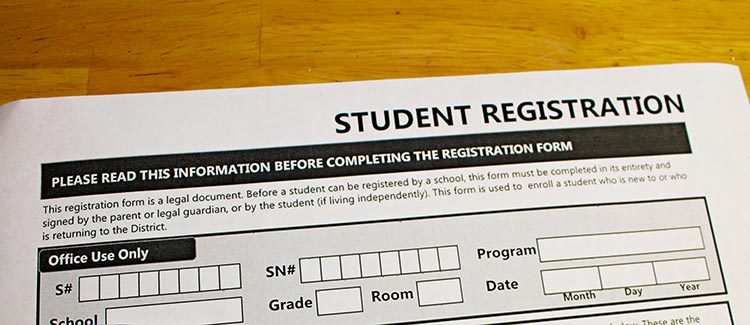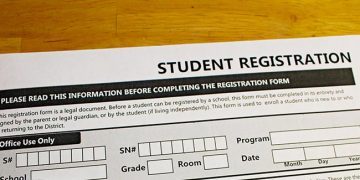Check well in advance of the school year to find out what paperwork is required and when the deadlines are. To be sure what a particular school’s enrollment requirements are, check with your school district, the school’s website, or call the school directly.
Public school enrollment requirements
Applications
Many school districts ask you to apply for more than one school with a common application. Find out from your district what their policy is.
Kindergarten cut-off date
In most states, to be eligible for kindergarten, your child must be at least 5 years of age. The birthday cut-off date varies by state. You can find the age requirement in your state here.
Even if your child does not make the kindergarten cut-off date, many states have a free preschool or pre-kindergarten program. For example, California has a public Transitional Kindergarten or TK, a transitional program for 4-year-old children whose birthdays fall between certain dates. The program is designed to help children transition smoothly from preschool to kindergarten. However, TK will not be available in every California school district until the 2025-2026 school year. After that date, California will join West Virginia, Alabama, and Oklahoma in delivering “universal” PreK to all children. Nearly every other state provides state-run programs for some, but not all, preschool students. The only states that don’t deliver any public instruction for this age group are Idaho, Montana, South Dakota, and Wyoming.
Provide proof of your child’s age and identity
Either a birth certificate or another reliable document stating the child’s identity and age (such as a passport, school ID card, school record, report card, military ID, hospital birth record, adoption record, or baptismal certificate). Some schools may require a social security card. If you need another copy of your child’s birth certificate, see Vital Records Information.
Proof of residence
Provide a driver’s license, voter/motor registration card, utility bill, rent statement, income tax return statement, proof of home ownership (including a mortgage statement) or any official document showing both your name and address.
Records of vaccination and immunization against specified diseases
Check with your school district to find out which immunizations are required.
All 50 states plus the District of Columbia require the Polio, Chickenpox, and DTaP (Diptheria, Tetanus, and Pertussis) vaccines. Every state except Iowa requires the MMR (Measles, Mumps, and Rubella) vaccine; and 44 states and the District of Columbia require the Hepatitis B vaccine (Montana, Rhode Island, South Dakota, Vermont, Alabama, and Maine are excluded). Only 17 states require the Hepatitis A vaccine, and fewer states than that ask for Haemophilus influenza Type b and Pneumococcal vaccines. Check out this handy guide to vaccination requirements by state.
Vaccine exemptions for medical, religious, and philosophical reasons are available in all 50 states, plus the District of Columbia. Parents can see a map view of those state-by-state vaccination exemptions here.
Vision and dental check-ups
Some schools require vision and dental check-ups at certain ages. Make the required appointments before registering.
Registration and emergency forms
You may have to fill out registration and emergency medical referral forms.
Auditions and portfolios
Some schools (usually magnet or charter schools with a specific focus) require students to demonstrate their talent in a performing or visual art. Usually, this involves an audition or submitting a portfolio of work. The school’s website should have detailed information on what they seek, information about auditions, and how to prepare and share portfolios.
Charter school requirements
Check the school’s website or call to see if there are any added requirements such as an application form. Charters don’t usually have an enrollment boundary and can recruit students from a larger geographic area. Some schools have a lottery system when there are more student applications than available slots. Some performing or visual art charter schools require students to demonstrate their talent with an audition or a portfolio of work.
Private school enrollment requirements
Check each school’s website or call the school directly. Most private schools require an application form, teacher recommendations, and past report cards. Many schools require your child to interview and take a formal assessment test. The majority of performing or visual art schools require students to demonstrate their talent with an audition or a portfolio of work. Additionally, most private schools ask for an application fee. Many require your child to answer a few essay questions to determine their passions and academic interests and a Character Skills Snapshot might be requested, plus a Family Statement. The required private school assessment tests are almost always either the Secondary School Admissions Test (SSAT), or the Independent School Entrance Exam (ISEE). It’s wise to prepare your child for these comprehensive tests with study guides, practice tests, and perhaps tutoring.





